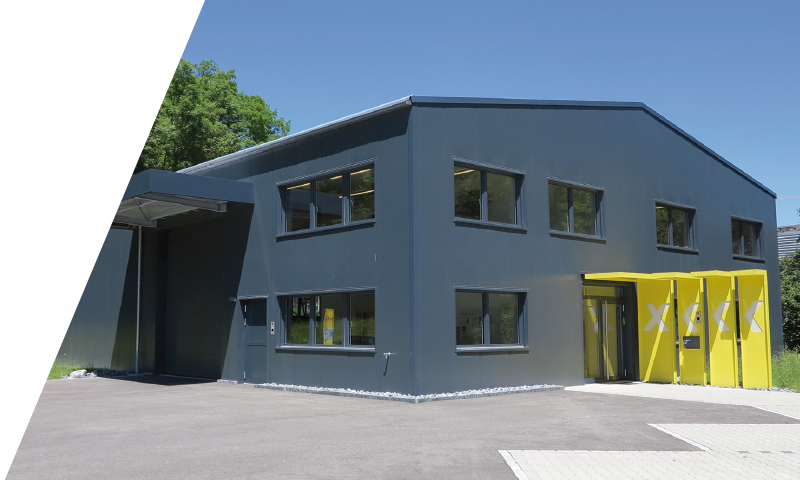
- Startseite
- Produkte
- DC/DC Wandler Bahn Eingang: 24 V, 36 V, 72 V, 110 V - Chassis mount.
- DC/DC Wandler Bahn Eingang: 24 V, 36 V, 72 V, 110 V - Open frame.
- DC/DC Wandler Bahn Eingang: 24 V, 36 V, 72 V, 110 V - DIN Rail.
- DC/DC Wandler Bahn Eingang: 24 V, 36 V, 72 V, 110 V - 19" Europakarte.
- DC/DC Wandler Bahn Eingang: 24 V, 36 V, 72 V, 110 V - 16.8 kVAC Isolation.
- DC/DC Wandler Bahn Eingang: 750 V, 1500 V.
- AC/DC Wandler Bahn Eingang: 115, 230 VAC - Chassis mount - Open frame - DIN Rail.
- DC/DC und AC/DC Wandler Kundenspezifisch.
- DC/DC und AC/DC Wandler Retrofit.
- DC/DC und AC/DC Wandler Medizin.
- USV Unterbrechungsfreie Stromversorgung.
- USB Charger Bahn.
- Applikationen
- Ressourcen
- Aktive Einschaltstrombegrenzung.
- Betriebstemperatur -50°C.
- Galvanische Trennung bis zu 16.8 kVAC.
- Isolationstest DC-DC Converter gemäss EN/IEC 60950-1 und IEC 62368-1.
- Mechanik.
- Power Boost - Doppelter Strom bei Überlast und Kurzschluss.
- Sicherungsautomat für DC-DC Wandler – wie auswählen.
- Wandler-Modul vs. Komplette Stromversorgung.
- Normen
- About intreXis
- Neuheiten
- Kontakt

DC-DC Wandler mit hoher galvanischer Trennung bis 16.8 kVAC
Some applications require DC/DC-converters with a very high galvanic isolation between primary and secondary or between primary/secondary and earth. The high isolation requirements are necessary because of the high voltage potentials that are present on the primary or secondary side:


Application example with high voltage on primary side:
DC/DC Converters, which are supplied directly by the traction line, like flat battery start units. The supply voltages for traction lines are specified in the standard EN 50163. Most traction lines use a nominal supply voltage of 750 VDC or 1500 VDC.


Application example with high voltage on secondary side:
DC/DC-converters, which supply a secondary circuit with a high voltage potential between output and earth, like modern gate drive units. The high voltage potential between output and earth can reach up to a couple of kilo-volts. IGBT drivers for 3.3 kV to 6.5 kV IGBT applications are an example.
Isolation requirement:
For railway applications, the requirements for the isolation coordination, e.g. clearance and creepage distances, are specified in the standard EN 50124-1. The calculation for the isolation distances is based on the rated insulation voltage Unm.
Unm is the maximum permanent voltage (> 5 min) between a live part of equipment and earth or another live part. For above application examples:
- For a DC/DC-converter supplied by the traction line, Unm is the highest permanent voltage according to EN 50163 (Umax1), which is 900 VDC for 750 VDC traction-lines and 1800 VDC for 1500 VDC-traction-lines
- For a DC/DC-converter with a high voltage potential between the output and earth, Unm is the maximum permanent voltage between the output and earth.
After Unm has been determined, other factors can increase the requirement for the isolation distances considerably:
- Overvoltage category: The standard EN 50124-1 defines four overvoltage categories (OV1-OV4), which characterize the exposure of the equipment to overvoltages.
- Pollution degree: The standard EN 50124-1 defines seven pollution degrees (PD1 –PD4B), which characterize the exposure of the equipment to dust and humidity.
- Altitude correction factor: The standard EN 50124-1 defines a correction factor for the clearance distances, if the equipment is used at altitudes > 2000 m above sea level.
The higher the rated insulation voltage Unm, the overvoltage category, the pollution degree and the altitude, the higher the required clearance distances.
Furthermore, to assess the quality and the lifespan of the insolation system, partial discharge requirements have to be fulfilled. Partial discharge are localized electrical discharges within the isolation barrier, caused by a high electrical field.
For above reasons, the isolation distances become very high and the isolation barrier between primary and secondary cannot be crossed with conventional methods, like “normal” transformers for the power-path and “normal” optocouplers for the regulation-path.
Special techniques must be used to overcome the big isolation distances.
intreXis AG has overcome this challenge and has designed DC/DC-converters with impressive isolation data:
- Isolation test voltage between primary and secondary: Up to 16.8 kVAC, 50 Hz, 60 sec.
- Isolation distances: Wide creepage distance and wide clearance distance: Up to 42 mm.
- Partial Discharge: Partial discharge extinction voltage > 5.1 kVAC at Q < 10pC.
- Low coupling capacitance: < 10 pF.
If you have an application with high voltage and high isolation requirement, contact intreXis AG and take advantage of our experience!
Download the intreXis Whitepaper Isolation HV-converters
Applikationen
Was man mit unseren Stromversorgungen bauen kann.
Ressourcen
Was man über unsere Stromversorgungen wissen muss.
Normen
Was man von unseren Stromversorgungen erwarten darf.
Über Intrexis
Stromversorgungen für Bahnanwendungen
Die Leidenschaft für Technologie und Performance ist unser Antrieb, kontinuierlich noch bessere und effizientere Stromversorgungssysteme zu entwickeln. Das Resultat ist das derzeit umfassendste Portfolio von DC/DC Wandlern für Bahnanwendungen.

